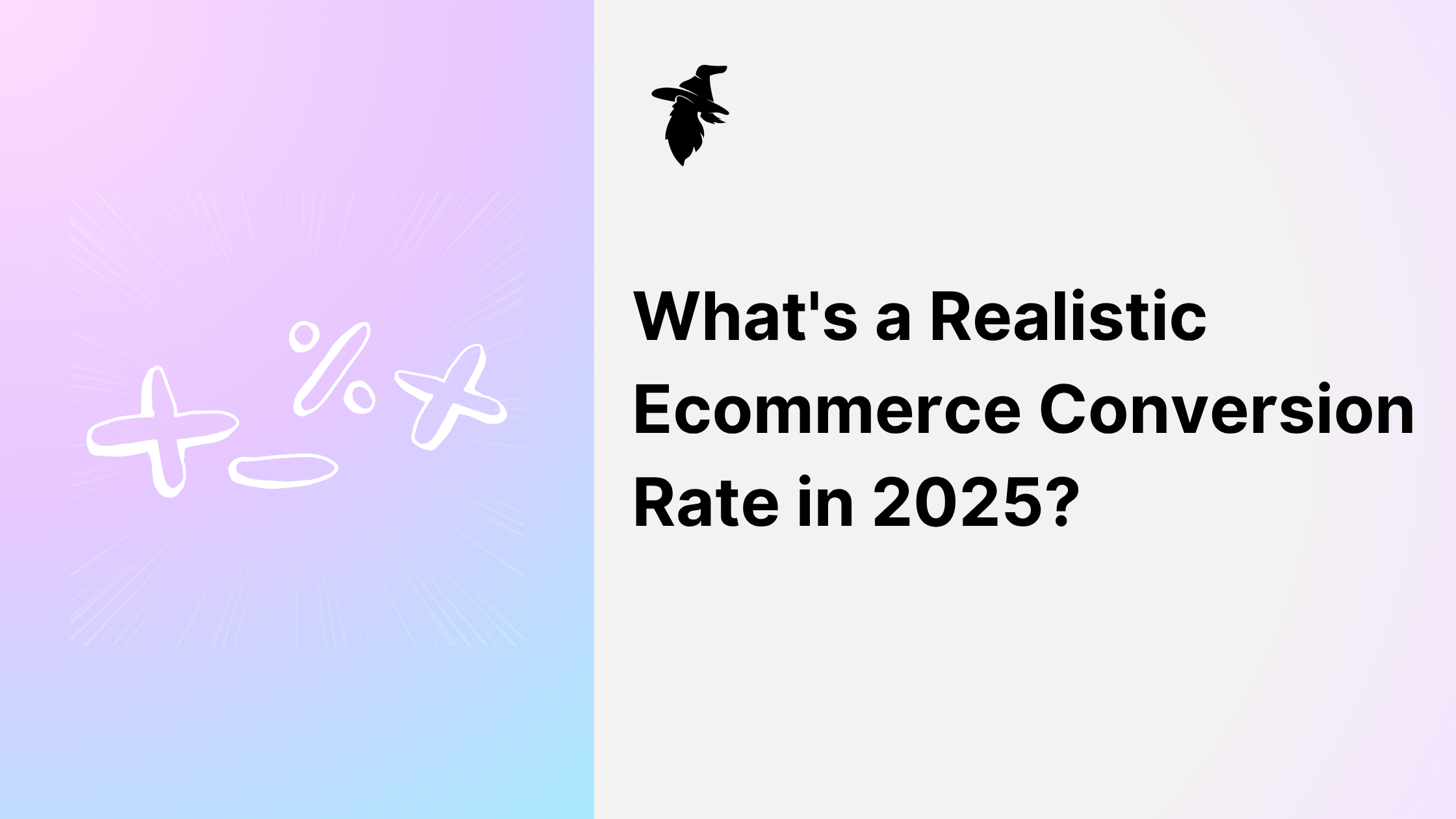Picture this: Your loyalty program has been running for six months, customers are earning points, and you're seeing some repeat purchases. But when you actually need to calculate the ROI accurately of your Loyalty Program, you're left scrambling through scattered data trying to prove its worth. Sound familiar?
You're not alone - most marketing departments are under pressure to prove the financial value of their programs, which can be difficult when most businesses struggle with customer engagement measurement. The difference between successful loyalty programs and those that drain resources? Strategic analytics tracking.
In this guide we explore the seven essential metrics that separate profitable loyalty programs from costly mistakes, plus exactly how to track them in your Shopify store.
Why Loyalty Program Analytics Matter More Than Ever in 2025
The loyalty landscape has fundamentally shifted. With customer acquisition costs rising 222% over the past decade and 58% of brands prioritizing personalization as their top retention strategy, guessing about program performance is no longer an option.
Today's successful Shopify stores use data-driven approaches to optimize their loyalty programs, leading to measurable improvements in customer lifetime value, repeat purchase rates, and overall profitability. The brands that thrive are those that move beyond vanity metrics to focus on actionable insights that drive real business growth.
Quick Reality Check
Most Shopify stores track basic metrics like total points earned or program members, but these surface-level numbers don't reveal program profitability or customer behavior patterns that drive growth.
The 7 Essential Loyalty Program Metrics Every Shopify Store Must Track
1. Loyalty Attribution Rate: Your Program's True Revenue Impact
What it measures: The percentage of total revenue that comes from loyalty program engagement.
Why it matters: This metric reveals whether your loyalty program actually drives incremental revenue or simply rewards customers who would purchase anyway. A strong attribution rate typically ranges from 15-25% for established programs.
How to track it: Calculate loyalty attributed revenue divided by total revenue. In Loyalty Wizard, this appears as "Loyalty Attribution Rate" in your analytics dashboard.
Optimization tip: If your attribution rate is below 10%, focus on increasing point-earning activities beyond purchases—social shares, reviews, and referrals can boost engagement without cannibalizing margins.
2. Program Member AOV vs. Non-Member AOV
What it measures: How the average order value of loyalty members compares to all customers.
Why it matters: Loyalty members should consistently spend more per order than non-members. This metric validates that your program incentivizes higher-value purchases rather than just frequent small orders.
Benchmark to aim for: Loyalty members typically spend 12-18% more per order than non-members.
How to track it: Compare "Loyalty Wizard AOV" against your store's overall average order value in your analytics dashboard.
Red flag: If member AOV is lower than non-member AOV, your reward structure may be encouraging discount hunting rather than value-driven purchases.
3. Customer Repurchase Rate (30, 90, 365 Days)
What it measures: The percentage of customers who make repeat purchases within specific timeframes after their first order.
Why it matters: This reveals the velocity of your loyalty program's impact. Strong programs show improving repurchase rates at each interval.
Industry benchmarks:
30-day rate: 15-25%
90-day rate: 25-35%
365-day rate: 35-50%
How to track it: Monitor "Customer Repurchase Rate" metrics in your analytics dashboard, paying attention to trends across all three timeframes.
Optimization insight: If your 30-day rate is strong but 90-day drops significantly, consider adding mid-tier rewards or surprise bonuses to maintain engagement momentum.
4. Points Redemption Rate
What it measures: The percentage of earned points that customers actually redeem for rewards.
Why it matters: A healthy redemption rate (60-80%) indicates customers find your rewards valuable and accessible. Too low suggests poor reward selection; too high might indicate rewards are too cheap.
How to track it: Calculate total points redeemed divided by total points earned, or find this metric directly in your analytics dashboard.
Sweet spot: Target 65-75% redemption rate for optimal program health.
Pro Optimization Tip
If redemption rates exceed 85%, consider raising point requirements or improving reward quality to protect margins while maintaining satisfaction.
5. Customer Lifetime Value (CLV) of Program Members
What it measures: The predicted total value a loyalty program member will bring to your business over their lifetime.
Why it matters: This metric justifies loyalty program investment and helps determine appropriate reward spending. Loyalty members should show significantly higher CLV than non-members.
How to track it: Monitor "Customer LTV" in your analytics dashboard, calculated as total sales divided by unique customers over the trailing 12 months.
Benchmark: Loyalty program members typically show 25-50% higher CLV than non-members.
Strategic application: Use CLV data to segment customers and offer tiered rewards based on predicted value.
6. VIP Tier Performance Metrics
What it measures: Revenue contribution, AOV, and purchase frequency across different VIP tiers.
Why it matters: Tiered programs should show clear progression in customer value as tiers increase. This validates your tier structure and reward allocation.
Key metrics to monitor:
Total Revenue by Tier
Average Order Value by Tier
Repeat Purchase Rate by Tier
Tier progression rates
How to track it: Access "VIP Tiers Analytics" in your dashboard to see customer distribution and spending patterns across tiers.
Optimization strategy: If higher tiers don't show proportionally higher spending, adjust tier requirements or enhance premium tier benefits.
7. Referral Program Conversion Rate
What it measures: The percentage of referred visitors who complete a purchase.
Why it matters: Referrals often convert at higher rates than other acquisition channels while carrying lower acquisition costs. This metric reveals the quality of your advocate network.
How to track it: Monitor "Conversion Rate" in your Referrals Analytics section, calculated as completed referrals divided by claimed referrals.
Benchmark: Strong referral programs achieve 15-25% conversion rates from referred traffic.
Growth lever: High-converting referral programs often become your most cost-effective customer acquisition channel.
Advanced Analytics: Taking Your Tracking to the Next Level
Cohort Analysis for Long-Term Trends
Track customer behavior by enrollment month to identify seasonal patterns and long-term retention trends. Customers who join during promotional periods may show different engagement patterns than organic enrollees.
Revenue Attribution by Activity Type
Analyze which point-earning activities (purchases, reviews, social shares) correlate with highest customer lifetime value. This helps optimize your point allocation strategy.
Redemption Pattern Analysis
Monitor when customers redeem rewards in their lifecycle. Early redeemers often show different retention patterns than customers who accumulate points over longer periods.
Common Tracking Mistake
Don't rely solely on program-level metrics. Track individual customer journeys to identify drop-off points and optimization opportunities.
Setting Up Your Analytics Dashboard for Success
Metric Category | Update Frequency | Key Decision Points |
Revenue Impact | Weekly | Budget allocation, reward adjustments |
Customer Behavior | Daily | Engagement campaigns, tier modifications |
Program Health | Monthly | Strategy pivots, reward structure changes |
Essential Reports to Generate Monthly
Executive Summary Report: Focus on attribution rate, member vs. non-member AOV, and overall program ROI for stakeholder presentations.
Operational Report: Deep dive into redemption rates, tier performance, and customer acquisition through referrals for program optimization.
Customer Insights Report: Analyze repurchase patterns, CLV trends, and engagement metrics to inform marketing strategies.
Common Analytics Mistakes to Avoid
Vanity Metric Obsession: Total points earned or program members don't indicate profitability. Focus on revenue-driving metrics instead.
Short-Term Thinking: Loyalty programs require 6-12 months to show meaningful results. Avoid making drastic changes based on weekly fluctuations.
Ignoring Negative Metrics: Monitor outstanding points liability and discount usage to ensure program sustainability.
One-Size-Fits-All Analysis: Different customer segments may show varying patterns. Segment your analysis by acquisition source, purchase history, or demographics.
Conclusion: Transform Data Into Loyalty Program Success
The most successful Shopify stores in 2025 don't just run loyalty programs—they strategically optimize them using data-driven insights. By tracking these seven essential metrics, you'll move beyond guesswork to build a program that demonstrably drives customer retention and revenue growth.
The brands that thrive understand that loyalty analytics isn't about collecting data—it's about transforming insights into actions that create lasting customer relationships. When you can prove your program's ROI while continuously optimizing performance, you've built a competitive advantage that compounds over time.
Ready to transform your customer data into a loyalty program that drives measurable results? Loyalty Wizard provides comprehensive analytics tracking for all the metrics covered in this guide, plus automated insights that help you optimize performance without manual data crunching.
Click here to start your 7-day free trial and discover how data-driven loyalty can accelerate your Shopify store's growth.
FAQ
What's a good loyalty program attribution rate for Shopify stores?
A healthy loyalty attribution rate typically ranges from 15-25% for established programs. Programs below 10% may need optimization in point-earning activities or reward structure, while rates above 30% often indicate strong customer engagement and program value proposition.
How often should I review loyalty program analytics?
Review key performance metrics weekly, conduct deep analysis monthly, and make strategic adjustments quarterly. Daily monitoring of customer behavior metrics helps identify immediate issues, while longer-term trends require monthly evaluation to avoid making decisions based on short-term fluctuations.
What's the ideal points redemption rate for a healthy loyalty program?
Target a redemption rate between 65-75%. Rates below 60% suggest customers don't find rewards valuable or accessible, while rates above 85% may indicate rewards are too generous and could impact profitability. The sweet spot balances customer satisfaction with program sustainability.
How do I calculate customer lifetime value for loyalty program members?
Calculate CLV by dividing total revenue from loyalty members by the number of unique program members over a 12-month period. This provides a baseline CLV that you can compare against non-members to measure program impact on customer value.
When should I be concerned about my loyalty program metrics?
Red flags include: attribution rates below 8%, member AOV lower than non-member AOV, redemption rates below 50% or above 90%, and declining repurchase rates across all timeframes. These indicators suggest fundamental issues with program structure or reward appeal.
What's the difference between program members and active members?
Program members are all customers enrolled in your loyalty program, while active members are those who've engaged recently (typically within 90 days). Focus on active member metrics for operational decisions, as they represent your truly engaged customer base rather than dormant accounts.
TL;DR
Essential Metrics to Track
Loyalty Attribution Rate:
15-25% indicates healthy program impact
Member vs Non-Member AOV:
Members should spend 12-18% more per order
Repurchase Rates:
Monitor 30, 90, and 365-day intervals for engagement velocity
Key Performance Indicators
Points Redemption Rate:
Target 65-75% for optimal program health
Customer Lifetime Value:
Loyalty members should show 25-50% higher CLV
VIP Tier Performance:
Higher tiers must demonstrate proportional value increases
Action Items for Success
Set up monthly reporting
covering revenue impact, customer behavior, and program health
Avoid vanity metrics
like total points earned; focus on revenue-driving indicators
Segment analysis
by customer type, acquisition source, and purchase history for deeper insights





